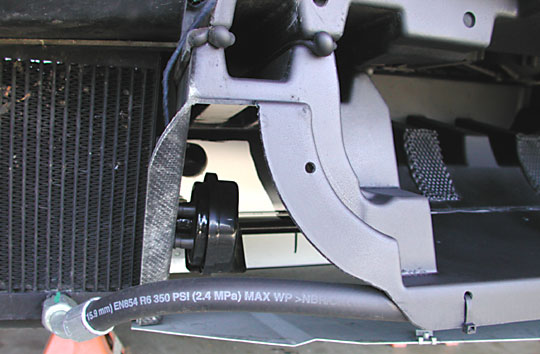(place picture of new horn)
Replace Horn with a Louder Air Horn
The original horn for the Lotus Elise is anemic. It is soft, a single tone, and does not command any attention. I have personally experienced the problems associated with a poor horn. A person continued to back towards me, out of a parking place, and inspite of continued blasts of my horn, almost backed into me.
I decided to replace my horn with a dual trumpet air horn. This has two benefits. The first is a more discordant sound. This is more noticable. The second benefit is one of sound level. It is much louder. Air horns take a instant longer to start as the compressor needs to generate air pressure before any sound is made.
I selected the Stebel Nautilus. This unit is compact because the horns and the compressor are part of the same unit. It also is loud, with a sound level of 115 db at two meters. It has a dual trumpet and the sounds are 530 and 680 Hz.

You can see the original horn back beyond the right side oil cooler. The ducting for the radiator and air vents is to the right. You can gain access to the air horn by removing the bottom panel. I decided to remove the front clam for other reasons and took the opportunity to install the air horn at the same time.

The original horn mount is a single bolt through the fiberglass of the front crash structure. The wires supply power.
I removed the horn and extended the wires by adding a splice. I mounted the new horn behind the original horn. The bolts that mount the horn are visible under the wheel well liner and near the front suspension mounting points.

The new horn must be mounted within 25 degrees of the trumpet pointing down. The entire bottom of the Elise is enclosed due to aerodymanic requirements. This also encloses the location of the horn and reduces its effectiveness.
The horn does come with a relay and it is possible to mount the relay at the same location as the original horn and to supply the relay with its own fused power line from the fuse block. This will prevent a voltage drop to the horn, supply it with the full voltage, and be protected by correct wire and fuse. I decided I did not want to add the weight and complexity, and the risk of a fire is small since I do not use the horn continuously.
The new horn requires more power, specified as less than 18 amps. I replaced the horn fuse, originally 7.5 amps with a 15 amp fuse.
